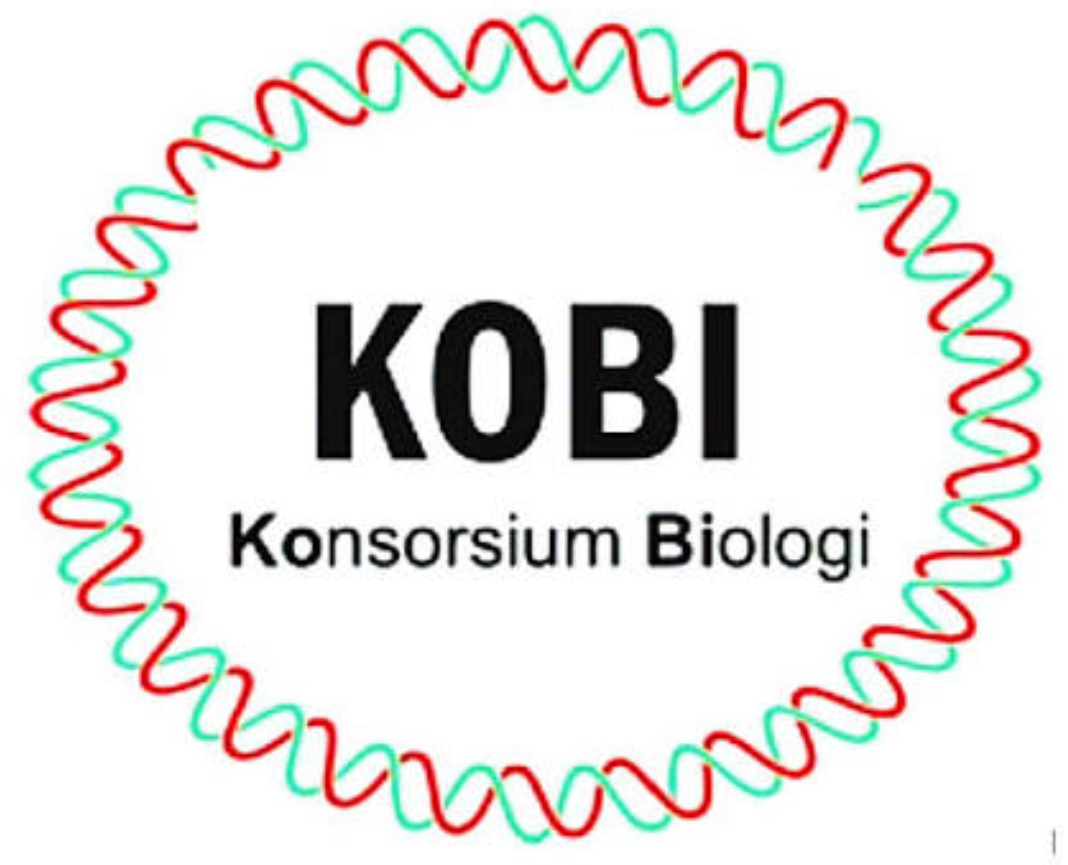The Diversity of Pteridophyta at Mountain Telomoyo as Biology Learning Resources
Abstract
The identification and utilization of pteridophyta diversity in the Telomoyo mountain area in learning activities has not been implemented. On the other hand, Biology as a science subject needs to be presented through scientific learning to encourage the development of students' science process skills. The type of learning resource by utilization is the right type to be used in scientific learning. These learning resources are found mainly in nature. Based on this, this study aims to identify the diversity of pteridophyta in Mount Telomoyo and to analyze their feasibility as a source of Biology learning at the high school. This study uses a descriptive exploratory method. The observation plot was determined to be 2 meters wide from the right and left side along the climbing route, using a purposive sampling technique. Analysis of learning resources using benchmarks by Djohar (1974). The results, there are 13 species of pteridophyta which can be classified into 12 genera, 10 families, 4 orders, and 2 divisions. Biology material that is appropriate for the application of learning resources is the Scope of Biology with a 75% suitability level. The results of the feasibility analysis of learning resources generally obtained a very feasible category (87%).
Keywords
Full Text:
PDFReferences
Arini, D. I., & Kinho, J. (2012). Keanekaragaman Jenis Tumbuhan Paku (Pteridophyta) Di Cagar Alam Gunungn Ambang Sulawesi Utara. Info BPK Manado, 19.
Backer, C. A., & Posthmus, O. (1939). Varenflora Voor Jawa. Buitenzorg: Uitagave van's Lands Pantetuin.
Darus, F. M., Buyong, F., & Abdullah, S. (2004). Fern Tree (Gleichenia Linearis) As Metal Sorbent For Lead Ions Removal.
Djohar.(1974). Peningkatan Proses Belajar Mengajar Sains Melalui Pemanfaatan Sumber Belaja. JurnalPendidikan
Fosberg, F. R., Sachet, M. H., & Oliver, R. (1982). Geographical Checklist of the Micronesian Pteridophyta and Gymoospermae. Micronesica, 23.
Indardi, N., & Sahri. (2018). Model Pengembangan Wisata Alam Gunugn Telomoyo oleh Lembaga Masyarakat Desa Hutan (LMDH) Kedu Utara. Jurnal Media Ilmu Keolahragaan Indonesia, 1.
Indardi, N., & Sahri. (2018). Model Pengembangan Wisata Alam Gunung Telomoyo oleh Lembaga Masyarakat Desa Hutan (LMDH) Kedu Utara. Jurnal Media Ilmu Keolahragaan Indonesia, 31-36.
Irnaningtyas. 2013. Biologi untuk SMA/MA Kelas X BerdasarkanKurikulum 2013. Penerbit Erlangga: Jakarta
Kapludin, Y. (2009). Penerapan Pendekatan Konstruktivisme dalam Meningkatkan Prestasi Belajar Fisiologi Hewan Mahasiswa Progarm Studi Biologi UNIDAR AMBON. Bimafika, 13-18.
Karthwohl, D. R. (2002). A Revision of Bloom's Taxonomy: An Overview. College of Education, 212-218.
Kinho, J. (2009). Mengenal Beberapa Jenis Tumbuhan Paku di Kawasan Hutan Payahe Taman Nasional Aketajawe Lolobata Maluku Utara. Manado: Balai Penelitian Kehutanan Manado.
Komalasari, O., Maryani, S., Juairiyah, O., & Novriadhy, D. (2019, March). Kearifan Lokal Masyarakat Desa Bakung dalam memanfaatkan Resam (Gleichenia linearis), Seduduk (Melastoma malabathricum) dan Tembesu (Fagraea fragrans) yang Tumbuh di Tanah Bergambut sebagai Obat Herbal. In Seminar Nasional Lahan Suboptimal (pp. 354-359).
Kurniawati, E., Wisanti, & Rachmadiarti, F. (2016). Keanekaragaman Pteridophyta di Kawasan Hutan Wisata Air Terjun Girimanik Kabupaten Wonogiri. LenteraBio, 74.
Loveless, A. R. (1999). Prinsip-prinsip Biologi Tumbuhan untuk Daerah Tropik2. Jakarta: Gramedia.
Mohammad Ali, dkk. (2007). Ilmu dan Aplikasi Pendidikan. Bandung: Pedagogiana Press
Postlethwait, J. H., & Hopson, J. L. (2006).Modern Biology. Austin: Holt, Rinnehart and Winston.
Putriutami, E. S., Harmoko, U., & Widada, S. (2014). Interpretasi Lapisan Bawah Permukaan Di Area Panas Bumi Gunung Telomoyo, Kabupaten Semarang Menggunakan Metode Geolistrik Resistivity Konvigurasi Schlumberger. Youngster Physics Journal, 97.
Razak, M., Hala, Y., & Taiyeb, A. M. (2016). Efektivitas Pendekatan Saintifik terhadap Keterampilan Proses Sains dan Hasil Belajar Kognitif Biologi Peserta Didik Kelas XII IPA SMA Negeri 4 Watampone. Jurnal Sainsmart, 58-73.
Sastrapradja, S., Afriastini, J. J., Darnaedi, D., & Wijaya, E. A. (1979).Jenis Paku Indonesia. Bogor:Lembaga Biologi Nasional-LIPI.
Silalahi, M. (2013). Bahan Ajar Taksonomi Tumbuhan Rendah. Jakarta: Universitas Kristen Indonesia.
Singh, G. (2019). Plant Systemtics, An Integrated Approach (4 ed.). Boca Raton: CRC Press.
Sitepu, B. P. (2017). Pengembangan Sumber Belajar. Depok: PT Rajagrafindo Persada.
Stace, C. A. (1980). Plant Taxonomy and Biosystematics, Contemporar Biology. London: Edward Arnold.
Sudjana, N., & Rivai, A. (2007). Teknologi Pengajaran. Bandung: Sindar Baru Algensindo.
Suratsih.(2010). Pengambangan Modul Pembelajaran Biologi Berbasis Potensi. Yogyakarta: FMIPA UNY.
Syakirulalim, A., Sujadmiko, H., & Hadisusanto, S. (2016). Keanekaragaman Lumut Epifit Di Gununng Telomoyo, Kabupaten Magelang sebagai Biosorbent Limbah Cair Industri Kerajinan Perak di Kotagede, Yogyakarta. Yogyakarta. Retrieved from http://etd.repository.ugm.ac.id/.
Tjitrosoepomo, G. (1994). Taksonomi Tumbuhan. Yogyakarta: UGM Press.
Toy, B. A., Karwur, F. F., da Costa, J. F., Langkun, J. F., & Rondonuwu, F. S. (2018). Desain Bahan Ajar Biologi Berbasis Discovery Learning Dengan Scientific Approach untuk Materi Jamur di Kelas X SMA. Biosfer, 67-75.
Wanma, A. O. (2016). Keanekaragaman Jenis Tumbuhan Paku (Pteridophyta) Di Gunung Arfak PapuaBarat. Bogor: Institut Pertanian Bogor.
Widhiastuti, R., Aththorick, T. A., & Sari, W. D. (2006).Struktur dan Komposisi Tumbuhan Paku-pakuan diKawasan hutan Gununng Sinabung Kabupaten Karo. Jurnal Biologi Sumatera.
Winter, W. P., & Amroso, V. B. (2003). Prosea (2) Cryptogams: Ferns and Fern Allies. Leiden: Backhuys Publisher.
Yusuf, U. K. (2010). Ferns of Malaysian Rain Forest, A Journey Through The Fern World. Selangor: Universiti Putra Malaysia Press.
Zubaidah, S. (2014).Pemberdayaan Keterampilan Penemuan dalam Scientific Approach MelaluiPembelajaran Berbasis REMAP COOPLE. Seminar Nasional XI Pendidikan Biologi FKIP UNS (pp.19-166). Surakarta: FKIP UNS.
DOI: https://doi.org/10.31002/ijobe.v3i2.3286
Refbacks
- There are currently no refbacks.
Copyright (c) 2021 Indonesian Journal of Biology Education

This work is licensed under a Creative Commons Attribution-NonCommercial-ShareAlike 4.0 International License.

This work is licensed under a Creative Commons Attribution-NonCommercial-ShareAlike 4.0 International License.
indexed by :
Jalan Kapten Suparman 39 Magelang, Jawa Tengah, Indonesia 56116
Phone (0293) 364113 Fax (0293) 362438
Website: http://jurnal.untidar.ac.id/index.php/ijobe








